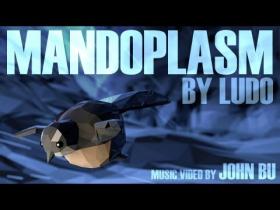Working in media does bad things to people.
It’s probably not surprising, it can be a brutal industry. Not only are you sometimes asked to do things no decent human should ever have to do – I’ve alluded to some of these before, and one day will say more, perhaps in the guise of fiction – but all the while, your entire output is being watched and judged.
Every business has its competitors, but only in media – and especially in television – is every day’s efforts rated, and held up against the competition for comparison. Even sportspeople usually only play once a week, and political polls are monthly – ratings are published daily, and can be magnified down to minute-by-minute. They’re then analysed by other media, eager for stories of failure.
Think about that for a second. If your shoe shop stops selling as many shoes as it once did, there are no articles in the national newspaper talking about your staggering decline, or how your arse is being kicked by the shoe shop down the road, predicting your inevitable demise. But that’s what happens, if not every single day, then certainly a few times each week when you work on a primetime news or current affairs programme.
If ratings were used as designed, to put a price on advertising, it wouldn’t matter. But instead the media – both externally and within the programmes themselves – use them to judge the programmes’ worth, and by implication, the worth of those working on it. The pressure to rate, and more particularly to out-rate the other channels creates fierce competition, and a general desire to see your opponent fail, so that you might win.
You’re expected to be loyal to your side. Yeah, you have friends who work across the fence, but when you get together you’ll argue about who’s got the best line up, the better interviews, the biggest scoop. When you’re out in the field together, you’ll hold on to key information in the hope their story ends up missing the angle. When the shows go to air you’ll watch them side by side, blow for blow, scoffing at story selection, talent choice, the lack of good pictures.
Your loyalty is as fierce as it is fleeting and fickle. Once you ‘defect’ to the other side – and that’s how it’s considered – it’s important to give your former employer a swift public kick in the shins before the door closes – there are at least a couple of recent high profile examples which spring to mind. And once over the fence, you speak of the bad old days, while your former colleagues now view you with suspicion.
It can turn you nasty, basically.
I’ve been guilty of this. Four years ago I wrote a post or two about murmurings around Campbell Live, and whether it was for the chopping block. I pointed to the relatively low ratings and said it didn’t seem sustainable for a prime time show. Campbell Live is clearly still here, even if my point was perversely proven when Close Up – which generally rated higher – was scrapped due to low ratings itself.
The posts I wrote weren’t inaccurate necessarily, but I regret that I felt the need to write them at all; to spread the gossip that was doing the rounds, to revel in what seemed to be the imminent demise of a competitor, under the thin veil of ‘media analysis’.
It wasn’t even because I didn’t like Campbell Live, or Mr Campbell himself. In fact one of my only experiences with John Campbell had come through this very blog – he’d read something I wrote, and taken the time to email me to say how much he enjoyed a particular turn of phrase. It was a lovely thing to do, and I was chuffed.
It’s telling if not surprising then, that the sole example of magnanimity I can ever recall seeing on TV was Mr Campbell’s quite touching on-air farewell to Mark Sainsbury and the crew of Close Up on their last day. He turned up to the farewell drinks too. That was all class.
The nastiness happens at an individual level too, where the competition is between colleagues for the best jobs, the chance to present, be an overseas correspondent, or even to get off the intern desk just once and do a story. It turns friends into rivals, even enemies, remarkably easily. Just this week I heard another case of a ‘friend’ betraying another’s confidence, effectively stomping on the fingers of their colleague as they climbed up the ladder.
I remember years ago a media friend of mine and I busted each other gossiping about the other. We genuinely liked each other – still do – so why? It was part envy, part mischief, and sometimes just going along with whatever the group might be saying. We had it out one day over lunch, then made a pact. It’s one I’ve stuck to, and extended to others, never to criticise each other, and if someone else was to say “don’t you think so-and-so is awful?” to explicitly disagree and stick up for your friend – an act so uncommon and unexpected in media that it often elicits an immediate backdown.
None of this is particularly revelatory I’m sure, but I wanted to say it anyway. To point out that it’s bullshit, and it’s reinforced by the public perception – including in the comments on sites such as this – that those working in the media are deliberately stupid, lazy, corrupt or inept, or all of the above. That it’s okay to Tweet how such-and-such a reporter is rubbish; their day’s work a pile of crap. That writing reviews which thinly veil your hatred and bitterness towards a medium you once inhabited yourself, is a productive way to earn a living.
I don’t want to write that, and I don’t want to read it. Not because I don’t enjoy reading it, but precisely because I do enjoy it, and I don’t like that about myself. Like many, I struggle against those demons that want me to be nasty, bitchy, gossipy, to revel in the misfortunes of others, even if ‘misfortune’ in this case is that they didn’t get the weekend weather presenter job, or whatever it might be.
That’s not to say there isn’t merit it speaking out against the indefensible – I think public reaction to racist cartoons, Bob Jones and Michael Laws should be encouraged, and makes us better, not worse, as it strikes against exactly the sort of toxicity I’m speaking about.
I like to think becoming a dad has made me a better person, or at the very least made me want to be. It’s hard not to be upbeat, albeit constantly tired, when there’s this amazing giggling mass of energy running around you the whole time, dragging you outside to jump on the trampoline with him, or out back to water the garden. And I think that contrast with the somewhat toxic media environment has become even more stark. At the same time, running YOURS.net.nz (the site I set up last year for creative youth) has put me in touch with so many keen, positive young people, and likewise with my teaching at AUT (I started last semester, teaching journalism there part time), I hope things could possibly change. That the old, almost FPP-style of two main newspaper companies, two big TV news organisations, two radio networks might become less cutthroat as it evolves into numerous online platforms, each with a part to play.
None of which is to say I want to lose my bite entirely. There’s a lot of merit in satire, wit, and a well-timed put down, especially when leveled against authority. But I’d like to think that if you meet me this year, you might see a slightly different person. A tired one probably – there’s a new arrival due in May – but one that’s slightly nicer to be around. One who finds merit in the old "if you can't say anything nice..." adage. One day at a time.
A final note. There are good people in media – I wouldn’t want to suggest that everyone is toxic. There are some I could single out; anyone who’s met Wallace Chapman knows there’s no malice anywhere in that man, and every interaction I’ve ever had with the mighty Keith Quinn, who is always willing to help out. John Campbell, as I’ve mentioned (I’m sorry) – even that scamp Duncan Garner this week agreed to have coffee with one of my students, an aspiring political journo, just because it’s a decent thing to do. (by the way there’s a lovely piece by Steve Braunias on Duncan in this month’s Metro that had me welling up on the plane). There are many others, but I guess my point is, there could be many more – fundamentally decent, intelligent people who have allowed themselves to be consumed with bitterness, envy and naked ambition. I hope some of you are reading this and might have a think before you speak the next time someone disses a colleague, or the show on the other channel.
Me, if I may borrow a phrase: I think you’re all bloody marvelous.
(Comments are open on this post. Go easy.)


